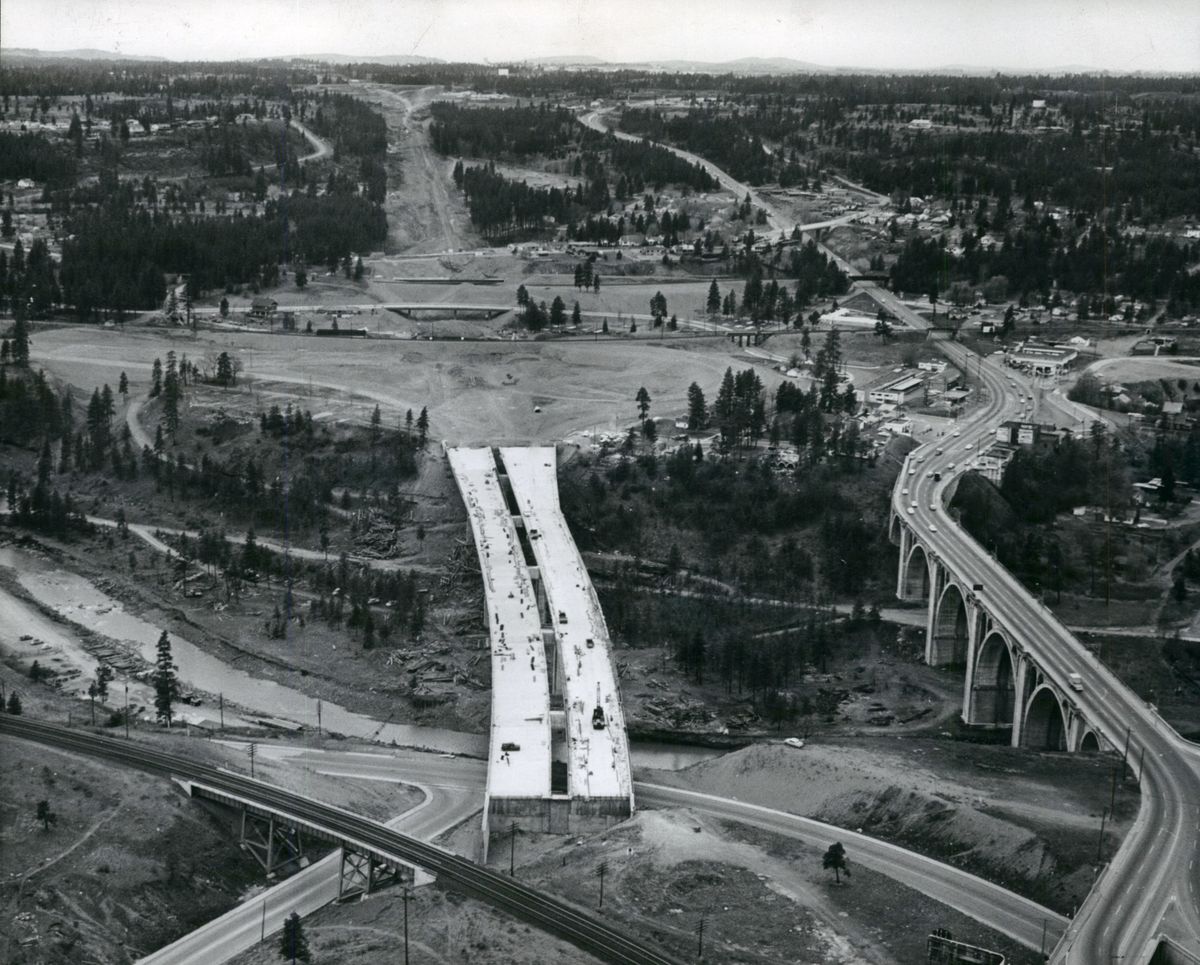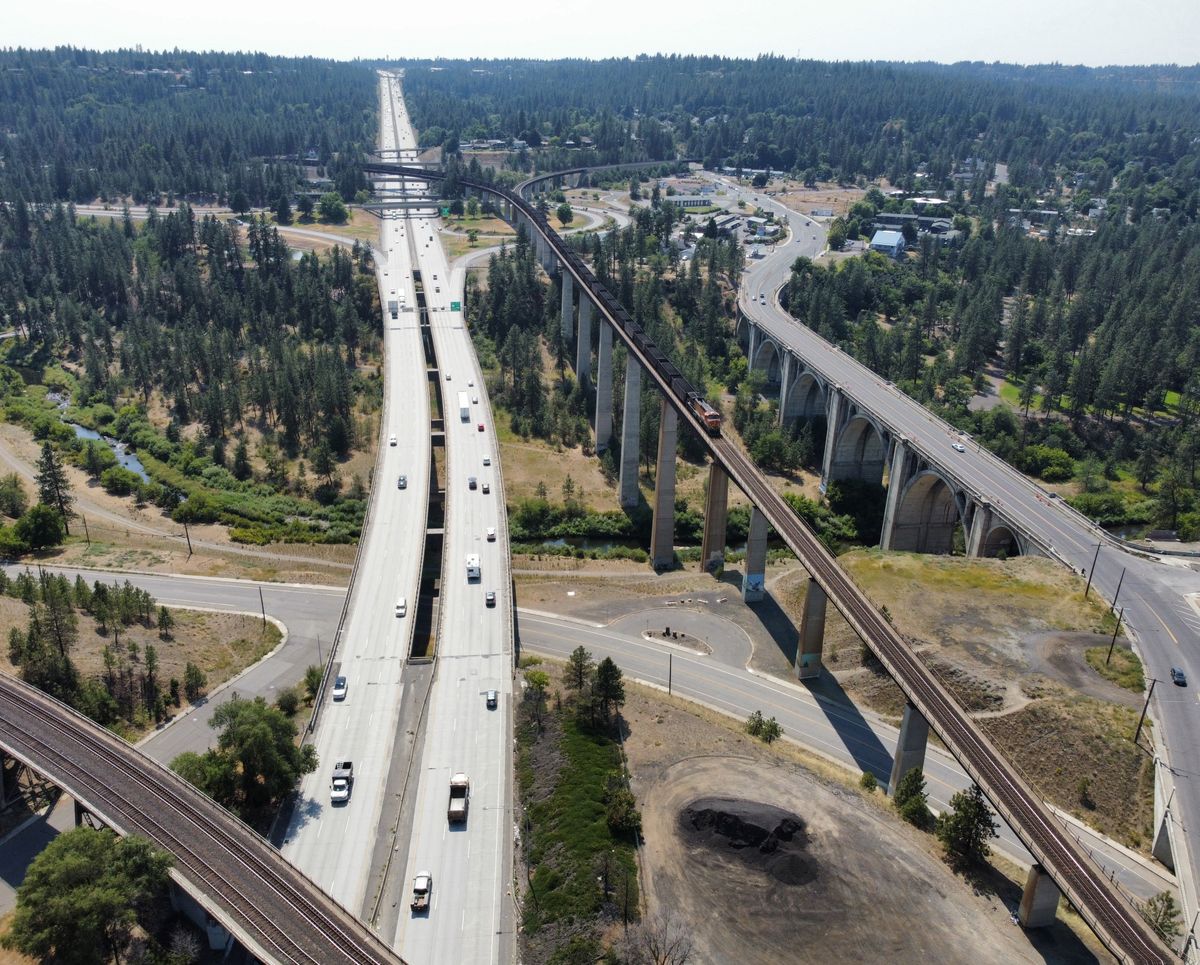Then and Now: Interstate 90 through Spokane
1963: The highway bridge over Latah Creek was one of the first pieces of Interstate 90 to be completed on the route through Spokane. It would take almost two decades to acquire the land, clear the route and pave the highway through Spokane and North Idaho, connecting Seattle to Boston. Before I-90, east-west traffic through town took the Sunset Highway, over an earlier Latah Creek bridge, at far right, which took traffic on surface streets through downtown. (Spokesman-Review photo archives)
The federal government began funding roads as early as 1916, with states providing most of the funding. Standards for road design varied widely and many long highways were only two lanes wide. But the Dwight D. Eisenhower Administration led the proposal to create a nationwide system of limited access, multi-lane highways to promote commerce and for national defense. This became the Federal Aid Highway Act of 1956. The northern East-West highway, Interstate 90, would connect Seattle to Boston.
In 1958, The Spokesman-Review reported that the construction of an interstate freeway from Eastern Washington through northern Idaho and into Montana would start soon and was estimated to cost $21,584,000, with 90% of that paid by federal interstate highway funds and the states paying 10%.
By 1963, the estimated cost was $33.6 million to complete the stretch through the city. Rights-of-way along the route had been purchased and dozens of buildings were torn down to make way. The project ground to a halt in 1963 when Deaconess Hospital filed a lawsuit to stop the plan that would place an elevated freeway just 65 feet from the windows of patients. The suit claimed that the noise and fumes would disturb and harm patients.
In addition, city street projects and private construction around the freeway’s footprint were also on hold because of uncertainty.
In other transportation news, the merger of the Great Northern Railway and the Northern Pacific Railroad was held up in the Interstate Commerce Commission, which was slowing plans to move the city’s railroad tracks from the Spokane River area for Expo ’74.
In February 1964, Deaconess won in Superior Court and Judge Ralph P. Edgerton said the freeway could come no closer than 300 feet of the hospital. Ideas for rerouting the freeway, even going around the city center, filled many newspaper stories.
In June 1965, the Washington state Supreme Court reversed the lower court’s decision and said freeway construction could restart. The planning, bidding and preparation for future stretches of roadway immediately ramped up.
The entire Spokane freeway was under contract for construction in 1968 with completion schedules for 1970, though final completion took a few more years.

